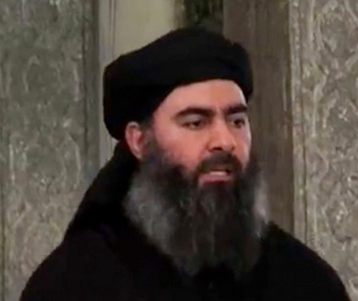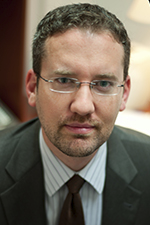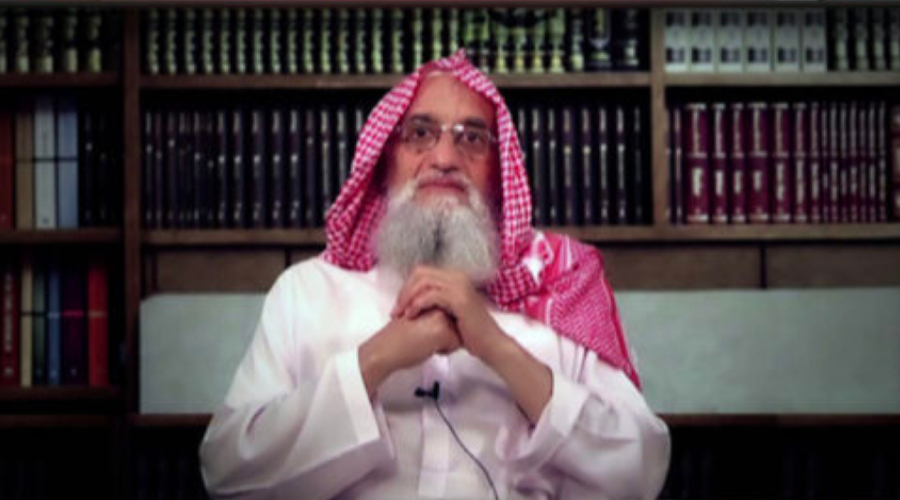Don’t (Completely) Blame America for Baghdadi
Editor’s Note: Abu Bakr al-Baghdadi, the brutal leader of the world’s most brutal terrorist group, is an enigma to many Westerners. Unlike Osama bin Laden, Baghdadi does not grant long interviews to Western journalists. So when the group suddenly grabbed Western attention, rumors and false reports abounded. William McCants, the director of the Brookings Project on U.S.

Published by The Lawfare Institute
in Cooperation With

Editor’s Note: Abu Bakr al-Baghdadi, the brutal leader of the world’s most brutal terrorist group, is an enigma to many Westerners. Unlike Osama bin Laden, Baghdadi does not grant long interviews to Western journalists. So when the group suddenly grabbed Western attention, rumors and false reports abounded. William McCants, the director of the Brookings Project on U.S. Relations with the Islamic World and author of the forthcoming book The ISIS Apocalypse (a kickass book with a kickass title), sets about correcting these errors. In this essay, he sets his sights on the biggest one: that the United States created Baghdadi.
***
The Western press usually portrays the leader of the Islamic State, Abu Bakr al-Baghdadi, as a religious scholar who was radicalized by the American invasion of Iraq in 2003 and his later detention in an American prison camp in 2004. That portrayal is wrong.
The story goes that Baghdadi was a peaceful, pious graduate student devoted to his studies of religious texts before the U.S. invasion. The invasion infuriated him. The stories divide on whether he took up arms then or after he was detained in February 2004 and held in an American prison for ten months. Either way, before the war he was peaceful, and by the time he came out of prison he was a committed insurgent.
The Arab press has typically followed the lead of their Western counterparts. But a few Arab journalists who spoke with Baghdadi’s close friends from his college days before the war told a different tale. They found that Baghdadi had radicalized well before the Americans invaded. Palestinian journalist Wael Essam talked to Baghdadi’s college friends and discovered he had already taken up with Muhammad Hardan, a radical Salafi who had fought in Afghanistan in the 1980s. Another college friend told Ali al-Hashem, a Lebanese journalist, that Baghdadi’s older brother Jum`a was already a jihadist and influenced his sibling’s outlook.
So why the divergent stories?
One reason is time. Many of the early influential biographies of Baghdadi in the Western press were written soon after the takeover of Mosul last year when there wasn’t much known about the enigmatic leader of the Islamic State. So the early reporting was spotty. For example, one early article reported that Baghdadi was in prison for six years rather than ten months because a former director of the American prison misidentified him. As time goes on, better information becomes available, like Baghdadi’s detainee records.
As the preceding example illustrates, another reason stories about Baghdadi diverge is the different sources of information. Talking to Baghdadi’s neighbor will tell you a lot about Baghdadi as a neighbor, which is quite valuable for creating a complete picture of the man. But talking to a neighbor won’t tell you much about a person’s inner life, as demonstrated by the countless stories of people who lived next to serial killers. (“He was such a nice man, I had no idea…”) I wouldn’t dream of criticizing the reporters who bravely traveled to Iraq and patiently interviewed anyone they could find who would talk about the man (and many were too scared to talk). I would just make the pedestrian observation that not all sources are equal, and each source is only a piece of the puzzle.
The stories of Baghdadi’s radicalization also differed because of how the puzzle pieces were assembled. In a biography of an enigmatic person like Baghdadi, you don’t know what the final picture is supposed to look like. To compensate, you create a mental picture of the man and see if the pieces fit. The fewer the pieces, the more your mental picture determines where you place them.
Pause for a second and answer this question: under what circumstances would you take up arms? Chances are, foreign occupation is high on your list, so let’s call that your theory of radicalization. In the absence of facts to the contrary and the presence of several accounts from Baghdadi’s neighbors that he was a peaceful guy before the war, how would you explain his radicalization? I’ll bet the puzzle pieces fit your theory of radicalization. And given that the U.S. invasion and occupation of Iraq did radicalize thousands of Iraqis and Muslims in general, Baghdadi’s supposed radicalization is a path many of his co-fighters really did travel.
But enough time has passed where we can begin to reappraise this story. More of Baghdadi’s intimate associates before the war have come forward, his government and university documents have come to light, and more Islamic State defectors have aired the organization’s dirty laundry. All of this tells us more about the man in charge of the Islamic State, which is valuable in itself. But it also helps us understand what lessons we are to take from his rise to power.
Based on these new sources, I come to a different conclusion about the meaning of Baghdadi’s rise. In my profile of the man, the lesson I draw is that we should be very wary of destroying a government, no matter how authoritarian, lest we create a proving ground in the ensuing chaos for men like Baghdadi to thrive and set up even more repressive states.
Should Baghdadi die, the state he built can survive without him. But he has capabilities and qualifications that his acolytes will miss. He’s a religious scholar, which matters a lot for a movement that obsesses over the religious knowledge of Muslim rulers. He’s not only a descendent of the Prophet’s tribe, which is one qualification for caliph; he’s also descends directly from the Prophet himself, which his supporters believe is a fulfillment of prophecy. And he’s a cunning bureaucrat that rose through the cutthroat ranks of the Islamic State by building alliances among its factions and eliminating his rivals once he got to the top spot. Baghdadi will be a hard man for the Islamic State to replace.
***
For a more in-depth look at the man behind the Islamic State, read my Brookings Essay on Baghdadi, titled “The Believer.” For even more on Baghdadi and the apocalyptic vision driving his organization, read my new book The ISIS Apocalypse: The History, Strategy, and Doomsday Vision of the Islamic State, now available for pre-order.





